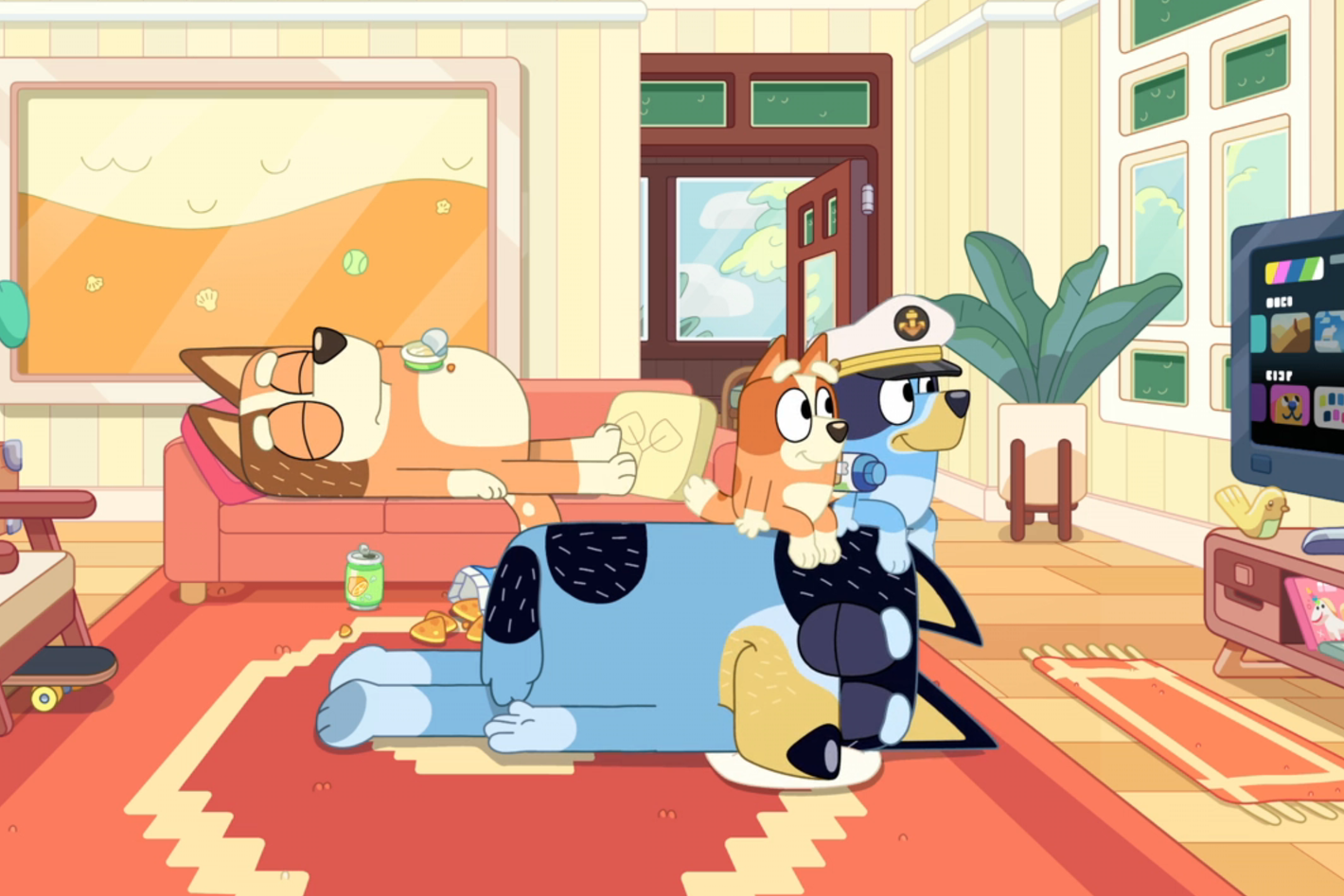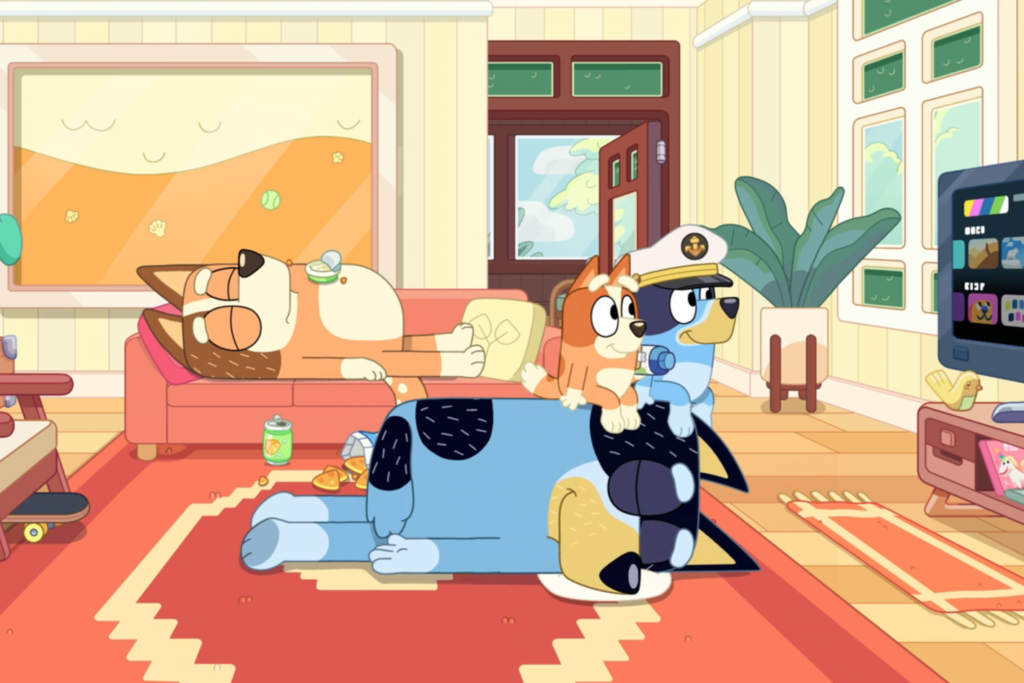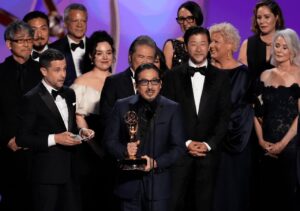
Last month, a press release from the American Psychological Association announced the results of a new study, a meta-analysis of 117 other studies with data from nearly 300,000 children in five countries, with the headline “Screen time and emotional problems in kids: A vicious cycle?” It’s the latest entry in the chorus of panic that’s been building for decades: Screen time for kids is bad. It’s been associated with developmental delays, sleep problems, aggression, anxiety, and depression, and parents should feel bad about it. A child-development psychologist recently told me that “screen-time guilt” has become its own topic of research. In May, Lingokids, an educational app for toddlers and early-elementary-age kids, released a video in which parents are put on trial, brought before a judge, and made to confess to how much time they let their kids use screens.
Obviously, the video forgives the parents — it’s a promotional video for a kids’ learning app — but the way the company weaponizes parent guilt underlines just how fraught things have gotten. Except there’s no clear, straightforward way to deal with that guilt. Guidelines about how to tackle screen time are so vague and hand-wavy that sussing out exactly what constitutes “too much” screen time, “okay but not great” screen time, or “completely fine, actually” screen time is impossible. Unless the plan is to go totally off the grid as children get older, any extremely screen-restricted approach gets further and further from the reality of life in 2025.
I have two kids, ages 8 and 11. I have worried and wondered about screen time since their infancies. But I have come to the hard-won conclusion that it’s completely fine, and even good, for my kids to watch TV and movies. I don’t even care what kind. You want to watch Paw Patrol? I’m not going to watch with you because I don’t like it, but we’ve got an hour until dinner, so knock yourself out. You need to see Kpop Demon Hunters immediately? Did you finish your homework? Then go for it — I hear it’s fun! I’m a TV critic, so some of my approach stems from hypocrisy and pragmatism. What exactly am I communicating to my kids if I’m at home all day watching TV and then I hurl my body in front of the nearest screen any time I catch their eyes drifting in that direction? But my feelings about TV and movies for kids are also the result of my own set of values about what I want my kids to experience, how I want them to learn to think about screens and storytelling and culture, and my desire to give them agency over their own brains.
When my daughters were toddlers, I made careful choices about what to show them. A 2-year-old’s brain can’t process things too fast or complicated, and they have limited references for what to even request. About once a day, often right before dinner, I’d set them up with a few episodes of Puffin Rock and Daniel Tiger. But once they got old enough to know there was more out there, whether by noticing an image on a streaming-service homepage or hearing someone talk about a show in preschool, it all went out the window. At about age 7, for instance, my eldest daughter went through an intense Pokémon phase, watching endless episodes of a show that was essentially the same story over and over again. A cute pocket-monster sidekick of a kid with no personality fights a meaner-looking monster sidekick of villainous kids. The battles last forever, with minutes-long recitations of everyone’s various power moves, weaknesses, and charged attacks. It is mind-numbing, it has no redeeming educational value, and my 4 year-old happily watched along with her.
This is exactly the kind of thing the official screen-time recommendations from the American Academy of Pediatrics wants parents to avoid. Their current guidance is focused on the 5Cs: child, content, calm, crowding out, and communication. For toddlers and preschoolers, they recommend “trying to work high-quality shows into your child’s viewing,” specifically calling out Daniel Tiger’s Neighborhood, Blue’s Clues, and Sesame Street. (This is the “content” part.) “Try not to distract them with a device any time they’re upset or bored,” the factsheet says. (Calm.) “Do something related to the show or movie with your child,” it suggests. “If your child is watching something interesting, talk about it.” (Communication.) This approach is gentler than previous guidance, which was far more alarmist about the consequences of even a little bit of TV, but it still reflects an idealized value system around screen viewing that bears little resemblance to reality. No one can sit down and scrub through every episode of Is It Cake? ahead of time to “make sure it is age-appropriate,” as the American Academy of Child and Adolescent Psychiatry suggests. Advice like “For ages 6 and older, encourage healthy habits and limit activities that include screens” is so vague it means almost nothing.
Once kids reach older elementary years, all the advice is about a giant, amorphous, terrifying, and indistinct monster called “screen time,” with very little detail about what “screen time” actually means. Surely there are important differences between watching cartoons, playing Roblox, watching YouTube GRWM videos, playing Mario Kart, or spamming the comments thread of a Twitch stream. Sitting down to view an hourlong episode of a TV drama feels very different in my own brain than getting caught in a morass of TikTok bedrot, and presumably there must be similar differentiation for kids. When it’s all lumped together as one big bad, there’s no way to tease apart what is actively dangerous versus something that’s harmless but maybe not improving your eventual SAT scores.
Just as important for me, though, is my belief that TV and movies are a space for kids to develop all kinds of values, skills, and preferences. Sure, Pokémon is not providing them with tools to develop quantitative-reasoning skills the way Numberblocks or Team Umizoomi might, but it does tap into things that kids long for. Children crave repetition, and when they’re watching Ash and his friends defeat Team Rocket over and over again, they’re learning basics of story structure, good-versus-evil archetypes, narrative escalation, and betrayal devices. (What, he was working for Giovanni this whole time?!) These are things I want them to understand deeply and intuitively so they can later enjoy more complicated, subversive, or challenging fiction without feeling alienated or disdainful.
With apologies to Neil Postman, I also refuse to have a relationship with fiction where something “just” entertaining is considered bad. My goal as a parent is not to optimize childhood but to raise kids who feel some control over their own lives, can make their own choices, appreciate balance, and like to like things. Dorsa Amir, a professor of psychology and neuroscience at Duke who studies how children interact with culture around the world, describes the pressure to explicitly teach kids new skills as a way to “sanitize the guilt you might feel about letting kids watch screens, or watch TV.” But parents don’t enforce that same restriction on themselves — we’re always watching things because we like them, not because it’s “good” for us — and kids want their experiences to mirror ours. “There is this patronizing view we take toward children where we’re saying we know better than them. It’s an interesting tension, because we often do know better than them. We are more informed about the world,” Amir tells me. “But when we push too far in one direction and clamp down because it’s so important to give them only the best information, it neglects children’s own motivations and desires.”
I like that my kids have some independence to choose what they want to watch, and I also know that banning them from Pokémon is the surest way to guarantee they’ll be obsessed with it forever. I also don’t treat screen time as currency for rewards or punishments for the same reason. There’s no strict rule about exactly how much time my kids are allowed; it’s just whatever fits comfortably into their day without sacrificing all the other things they need to do. It’s sort of like Montessori, where kids get a room full of curated toys and the freedom to play with whatever they want — except the “room” is a paid streaming platform and the “curated toys” do, unfortunately, occasionally include something unbearable called Rainbow Rangers. (Trash, but not harmful.) Sometimes I make suggestions, but they get actionable control in the form of a thing conveniently called a remote control.
That said, all the data indicates there are risks in that giant “screen time” bucket, which is why the other side of my household’s screen-time mantra is “No YouTube without a parent.” YouTube has fantastic media for toddlers and kids; it’s home to Ms. Rachel and thousands of perfectly charming and benign how-to-draw tutorials and Mario speedruns. There are often some full episodes of TV shows kids can watch for free on YouTube rather than needing to pay for a streaming subscription. It’s easy to see how a fear of screen time can make YouTube deceptively appealing, especially when kids are younger. If they should be spending less time on screens, and YouTube videos are often shorter than TV episodes (a three-minute video versus a 12-minute episode of Trash Truck or a 28-minute episode of Daniel Tiger’s Neighborhood), then surely YouTube must be better! It’s just one video, not 20 episodes of something. Less time staring at an iPad! And when the emphasis is primarily on valuing screen time as educational, it makes total sense to prioritize YouTube, which is filled with people teaching precisely the thing your kid wants to know.
But even walled-garden YouTube spaces like YouTube Kids are full of freakazoid AI cartoons; uncanny, disturbing IP ripoffs; and kid influencers who turn their whole houses into ball pits and unbox their constant procession of brand-new toys. The most adorable, endearing YouTube channels are about three autoplay steps away from MrBeast, a monetized kid vlogger encouraging children to buy their skin-care products, or a video-game livestream where commenters link to conspiracy theorists. Watching one or two full episodes of TV on a YouTube channel does not then funnel a child viewer to watch more full episodes. It pushes them to clips, compilations, and rip-off copycats labeled “Full Episode” but actually full of Peppa horror.
There’s lots of YouTube I am happy to let my kids watch even when I’m not interested — like, for instance, the DIY videos that have fueled my daughter’s current fascination with making squishy fidget toys out of paper and packing tape. But no matter what controls I put on their accounts, there’s little distance between the things that are fine and all the stuff that’s gross, alarming, or outright manipulative. For related reasons, I give them some limited time on Roblox, have more lax screen-time restrictions on apps like Apple’s drawing app Freeform, and happily let them play console video games like Astrobot and Pikmin. There’s no specific amount of screen time on any platform that is or is not “correct.” Not every day is the same, and all kids are individual people with their own desires and dislikes. But TV, movies, all kinds of video games, and eventually social media will be in their lives at some point. My goal is to create safe boundaries and then give my children some freedom to figure out how to balance it for themselves.
Knowing that, and thinking through the balance of safety and pleasure, has made me doubly insistent on giving them freedom to watch TV. Before letting them access the firehose of algorithmic social media-based suggestions, I am happy to let the rhythms of episodic storytelling, three-act structure, cliffhangers, and denouements carve familiar grooves into their brains and stretch their ability to hang with a story even if it does not offer resolution within a ten-minute clip. Lately they’ve been watching Bob’s Burgers, a show not really meant for kids, and in its own way, just as unhelpful for child development as 50 hours of Pokémon. Recently they came running into dinner, delighted. They had watched a Bob’s Burgers scene they realized had to be a parody of My Neighbor Totoro, and they could not believe how funny it was. I had no idea; I’d never seen that season of Bob’s Burgers. They found it themselves.
Related
- How Bluey Became the Best Kids’ Show of Our Time
- 24 Kids’ Shows That Are Actually Great
- What Should Your Kids Be Watching?
A no-guilt screen-time guide.

































































